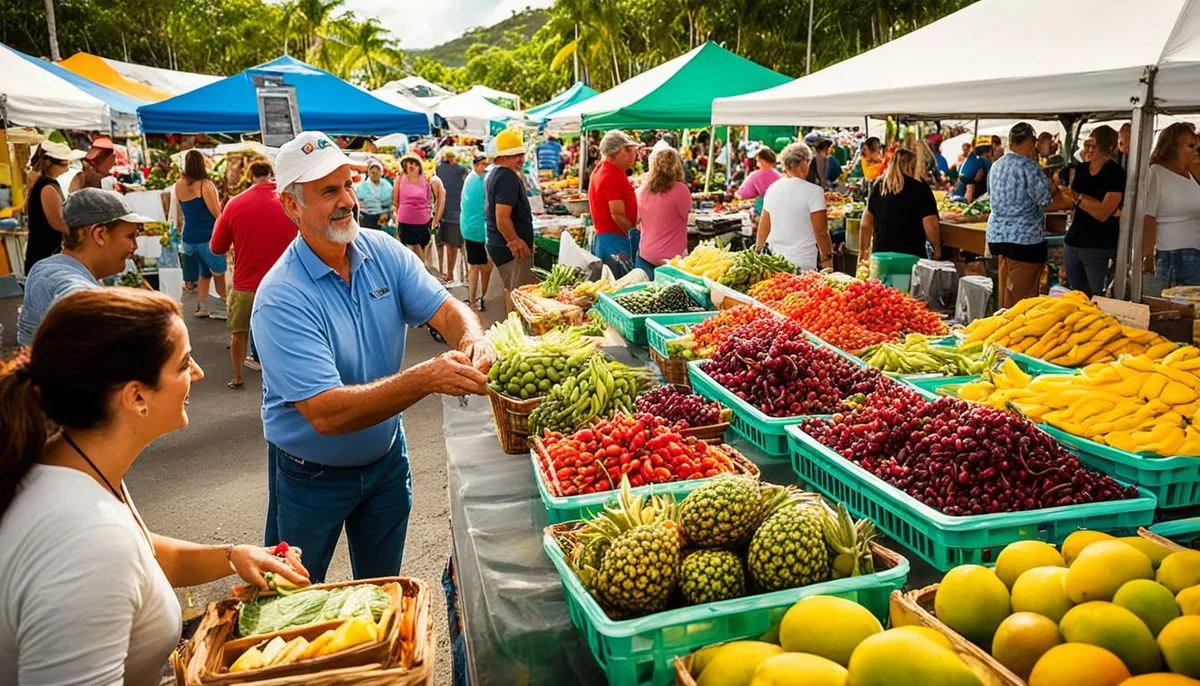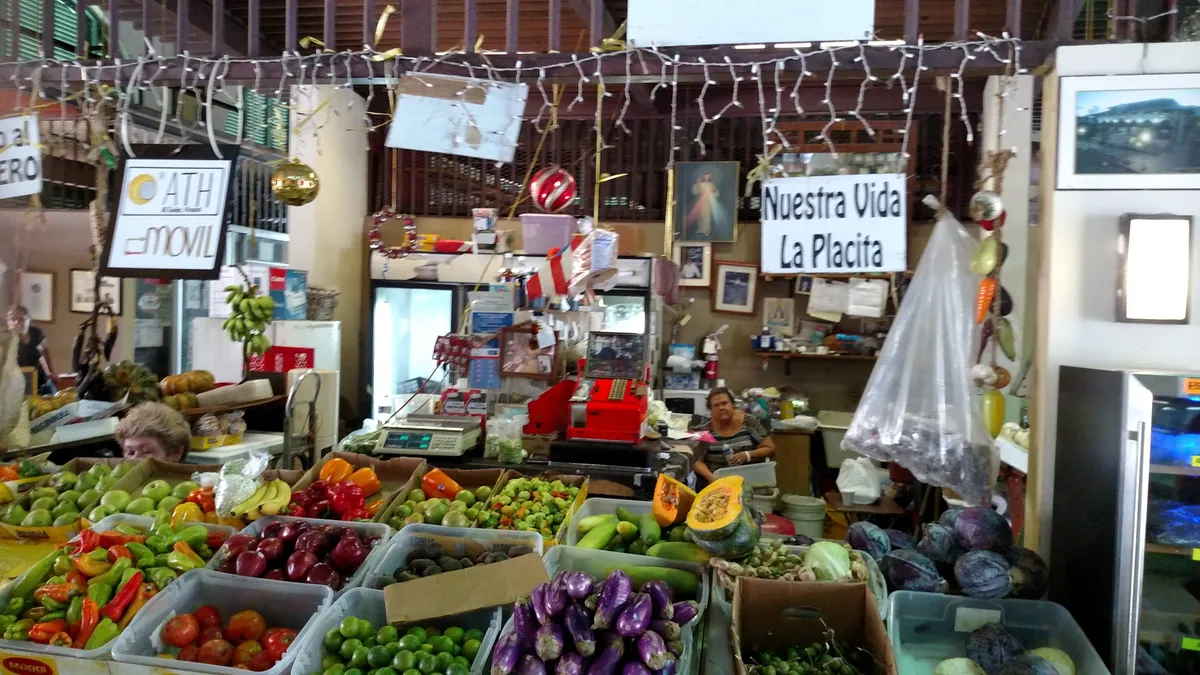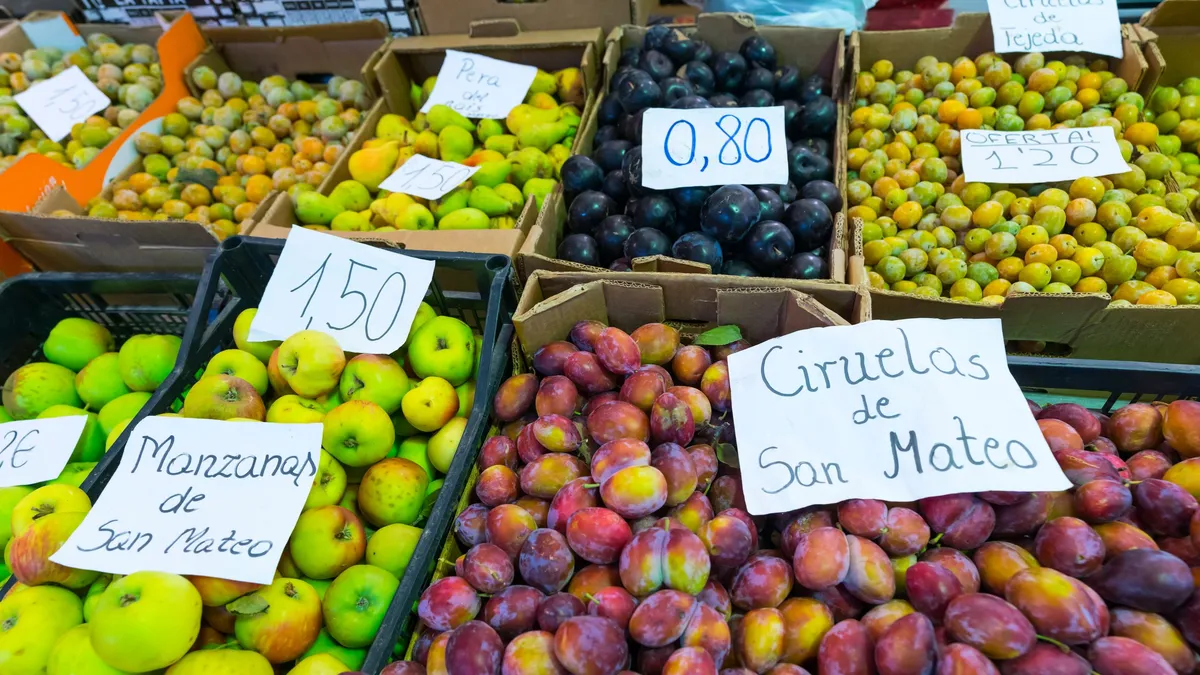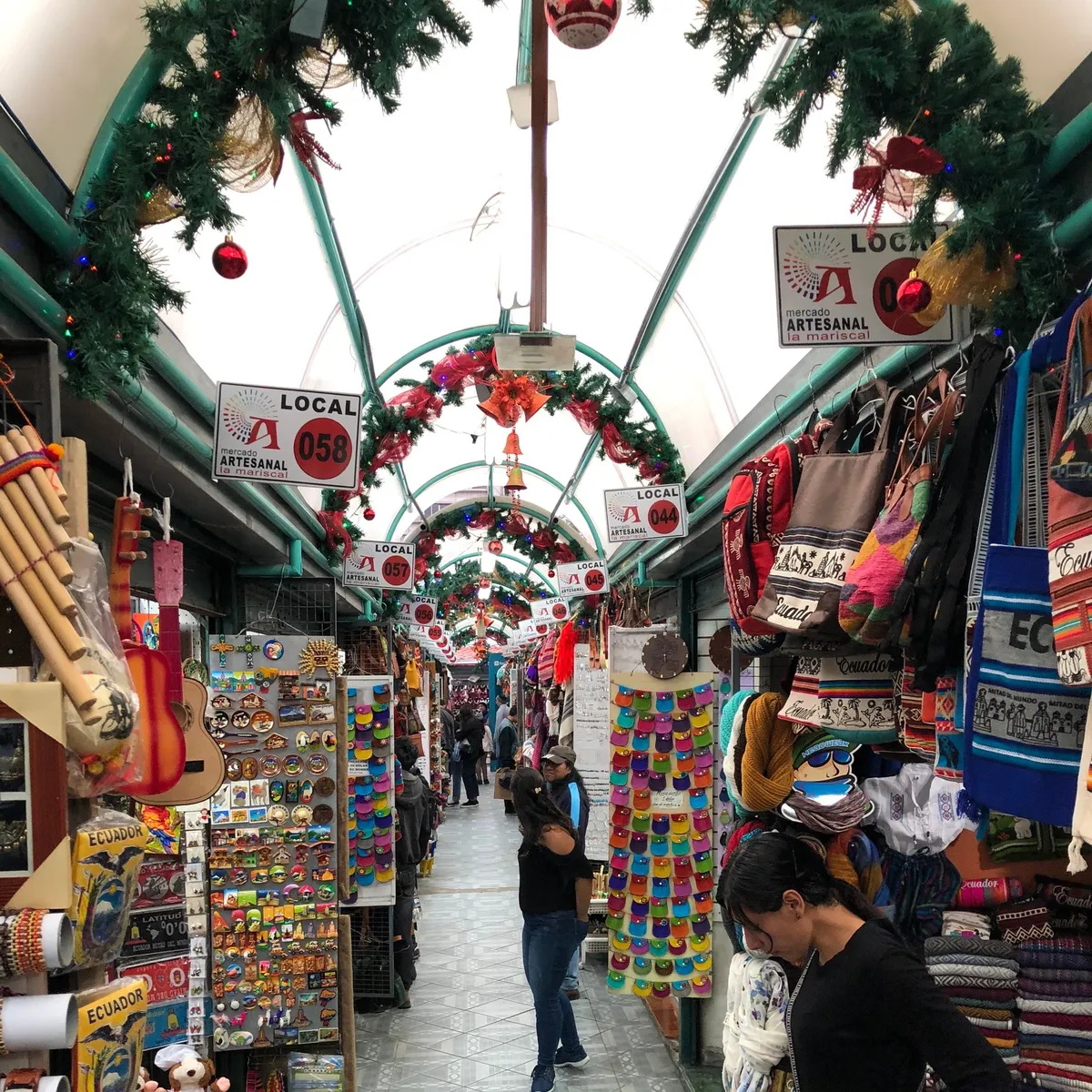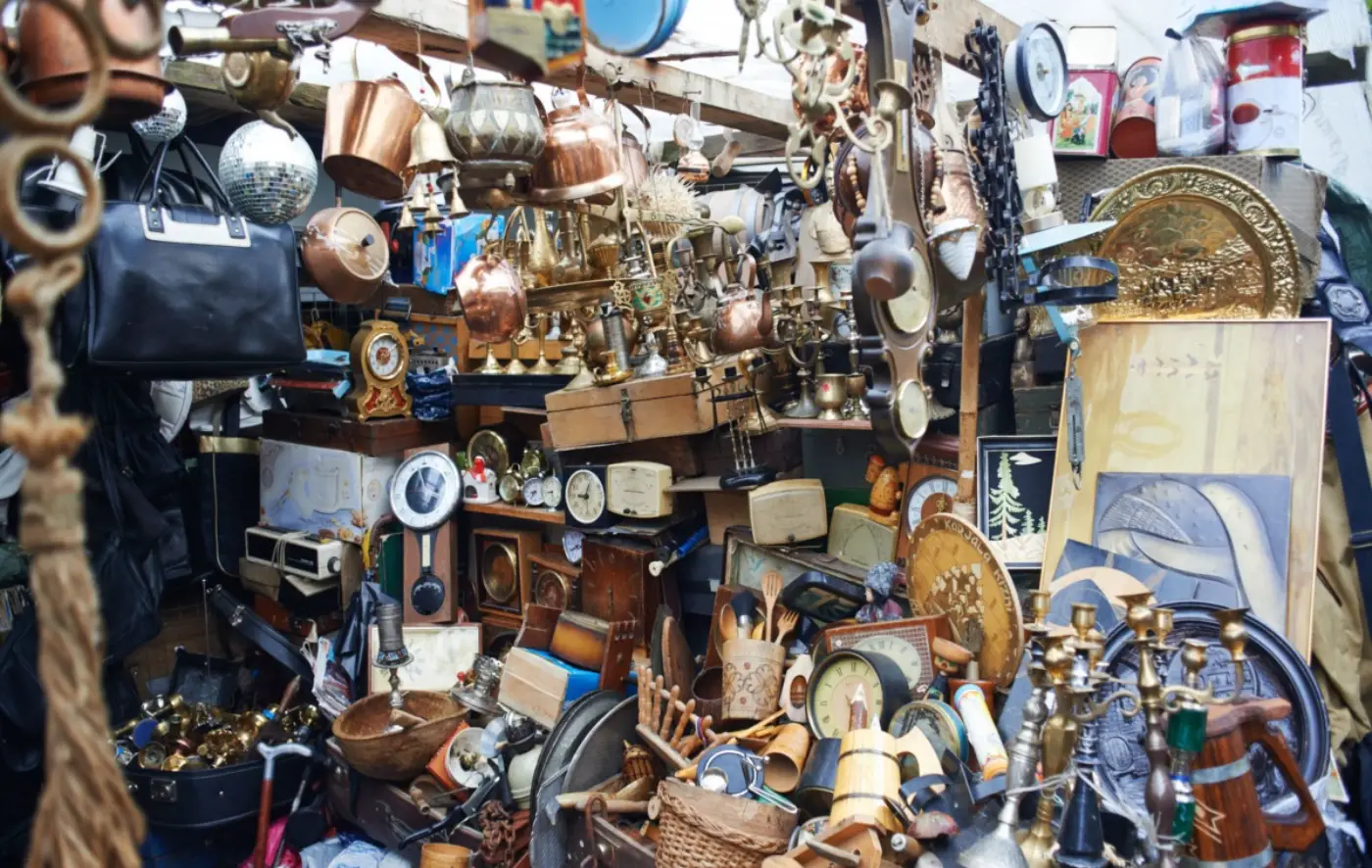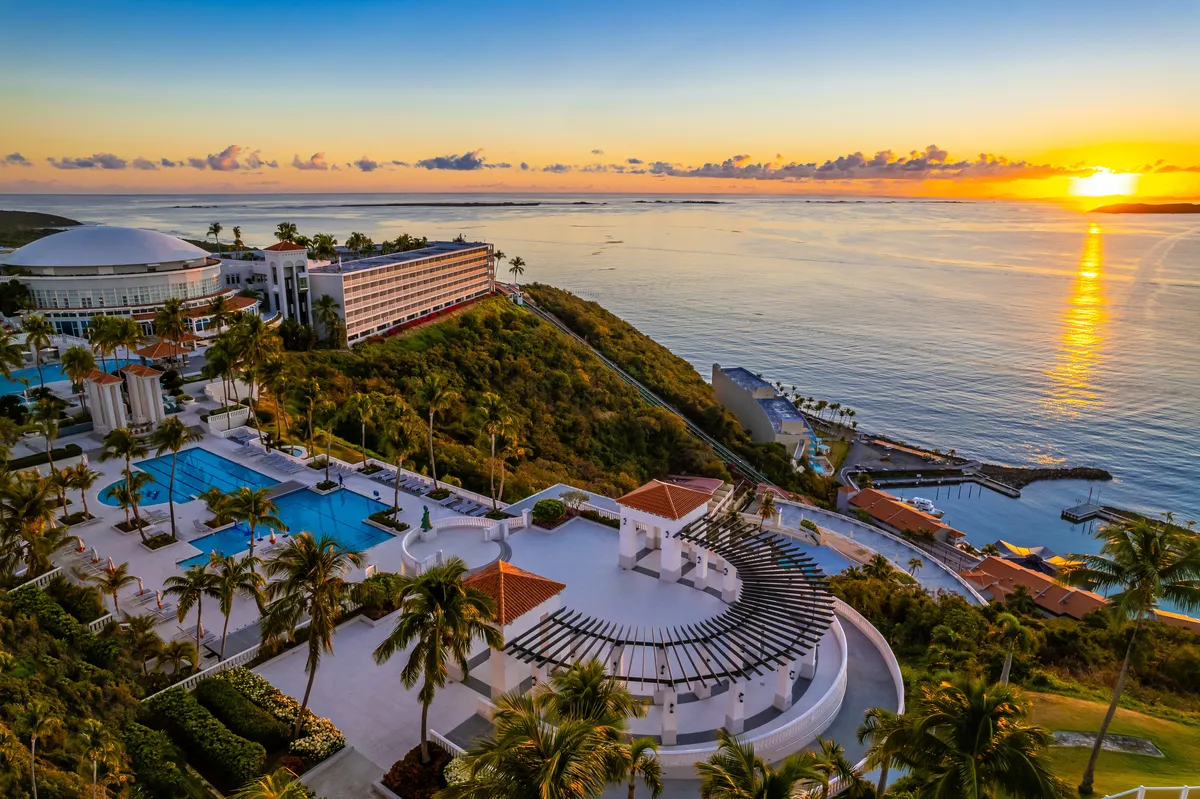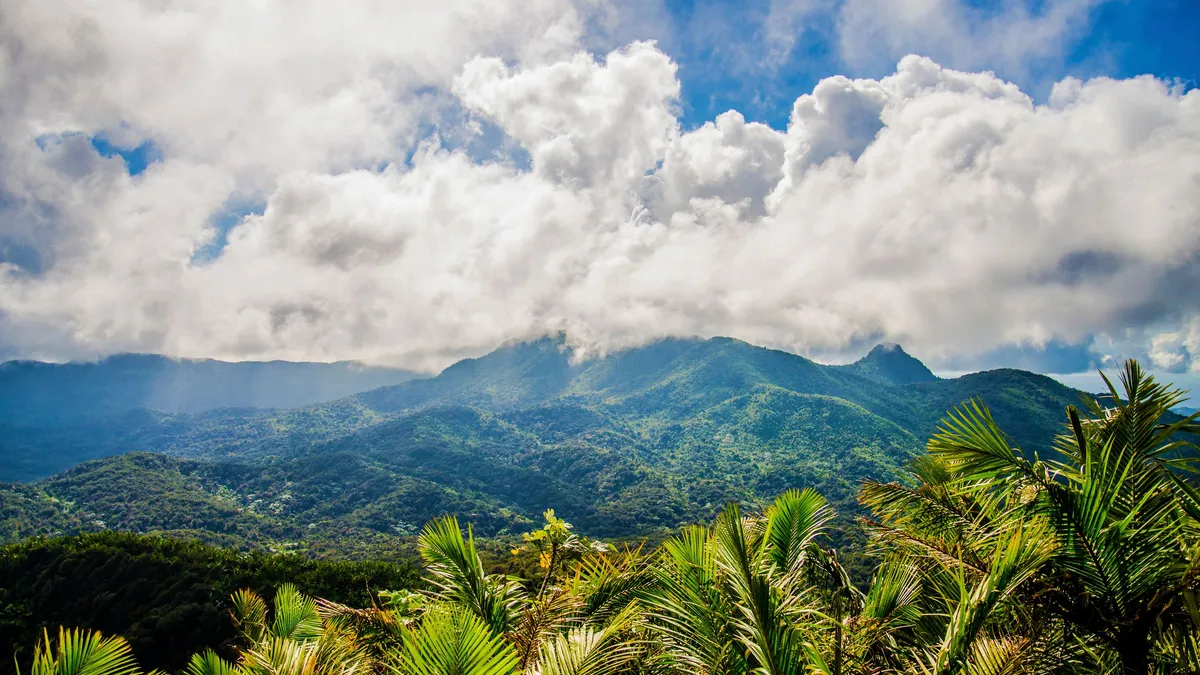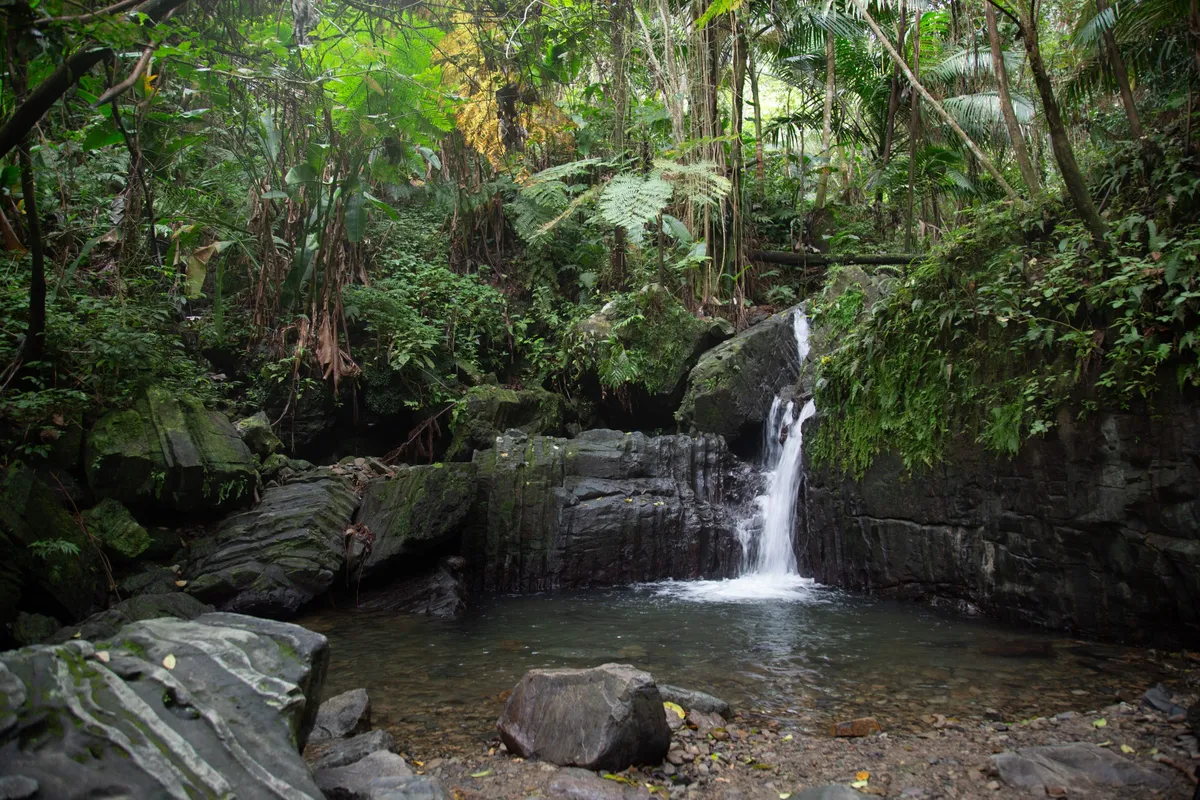Stepping into the local Puerto Rico markets is like diving straight into the island’s soul—where the sweet scent of ripe mangoes mingles with fresh recao in the humid air, salsa music spills from nearby bars, and vendors greet you with a warm “Buenos días.” These bustling hubs offer something far more profound than any resort gift shop: a genuine connection to Boricua culture. You’ll find farmers’ markets brimming with tropical produce, artisan fairs showcasing centuries-old crafts, and sprawling flea markets with everything from hand-carved santos to live chickens. After more than a decade exploring these markets and chatting with local vendors, farmers, and fellow travelers, I’ve put together this comprehensive guide to help you navigate the best markets in Puerto Rico like a true local, from San Juan’s electric La Placita to Rincón’s laid-back Sunday gatherings.
Quick Guide: The Can’t-Miss Markets in Puerto Rico
Before we dive deep into each market type, here’s your at-a-glance guide to the island’s essential market experiences:
| Market Name | Location | Best For | Typical Hours | Pro Tip |
| La Placita de Santurce | San Juan | Farmers’ market (day) and nightlife (night) | Market: Mon-Sat 6am-6pm; Nightlife: Thu-Sat evenings | Go for fresh produce by day, but stay for street dancing at night. Don’t miss the mojitos at Coco de Luis! |
| Paseo de la Princesa | Old San Juan | Artisan crafts and scenic views | Weekends, 9am-9pm | Visit on Sunday afternoon for live salsa music that turns the promenade into a dance floor. |
| San Sebastián Market | San Sebastián | Everything (flea, farm, and art) | Fridays, 7am-5pm | Arrive early for the best selection and bring cash. It’s a true local experience under one giant roof. |
| Rincón Farmers’ Market | Rincón | Organic produce and laid-back vibe | Sundays, 8am-1pm | It’s a social event as much as a market. Grab a fresh juice, listen to music, and soak in the atmosphere. |
| Mercado Agrícola Natural | Old San Juan | Organic and local produce | Saturdays, 8am-1pm | The bread vendor sells out fast! Get there before 10 AM for the best stuff. |
Understanding Market Culture: The Plaza del Mercado
Long before supermarket chains arrived, the Plaza del Mercado served as the beating heart of every Puerto Rican town. These central market buildings were more than shopping destinations—they were community gathering spots where daily life unfolded. While modern grocery stores have replaced many historic plazas, the market culture thrives across the island, offering you an authentic window into local life and the agricultural richness behind Puerto Rican cuisine.
Think of visiting these farmers’ markets as a delicious treasure hunt. You’ll encounter colorful produce that looks nothing like what’s back home, and understanding what you’re looking at makes the experience so much richer.
A Guide to Tropical Fruits & Vegetables
Fruits You Need to Try:
- Quenepas are local favorites—these small, green, grape-like fruits have thin, brittle skins you crack with your teeth to reveal sweet, tangy, gelatinous pulp surrounding a large seed.
- Rambután catches your eye immediately with its wild, hairy red exterior, but inside you’ll find juicy, firm flesh similar to lychee or grape.
- Chironja is Puerto Rico’s unique citrus hybrid—part orange (china), part grapefruit (toronja)—incredibly juicy with a flavor that’s less sweet than an orange but less tart than a grapefruit.
- Corazón (custard apple) lives up to its name with a heart-shaped form, bumpy green skin, and sweet, creamy white pulp that tastes like custard.
- Acerola (Caribbean cherry) might be small and red, but it’s one of the world’s most potent Vitamin C sources, often found in juices and frozen pulp for smoothies.
Vegetables and Tubers (Viandas):
- Viandas is the collective term for starchy root vegetables that form the backbone of Puerto Rican cooking. Look for yautía (taro), ñame (yam), and yuca (cassava)—essential ingredients in dishes like sancocho (hearty stew) and pasteles.
- Pana (breadfruit) is a large, green, starchy fruit you can fry like tostones or use to make mofongo.
- Calabaza (West Indian pumpkin) is a type of squash used to thicken stews like habichuelas guisadas (stewed beans).
- Ajíes dulces (sweet chili peppers) are small, colorful peppers that look spicy but deliver a sweet, aromatic flavor—they’re the cornerstone of sofrito, the flavor base for countless Puerto Rican dishes.
La Placita de Santurce: San Juan’s Day-to-Night Market
No market in Puerto Rico better captures the island’s dynamic blend of tradition and modernity than La Placita de Santurce. This historic market square pulls off an impressive trick—it’s a traditional community hub by day and transforms into one of San Juan’s most electrifying nightlife spots after dark. You’re getting two completely different, yet equally authentic, experiences in one location.
The Daytime Scene: During daylight hours, La Placita operates as it has for decades—a bustling farmers’ market where locals buy fresh produce, meats, and flowers. The main market building, Plaza del Mercado, fills with vendors offering everything from tropical fruits to locally made goods. Outside, you’ll spot charming avocado sculptures (a perfect photo op) and several small, no-frills eateries (fondas) serving delicious, affordable Puerto Rican lunches like chicharrones de pollo (fried chicken chunks) with tostones. The pace stays relaxed, and you’ll often see older residents sitting around the square playing dominoes—a glimpse into genuine daily San Juan life.
The Nighttime Transformation: As the sun sets, everything shifts. Produce stalls close, and the plaza’s focus pivots from commerce to celebration. Surrounding streets, quiet during the day, explode with energy as dozens of bars and restaurants open their doors, spilling tables, chairs, and patrons onto the sidewalks. The air fills with live salsa and reggaeton, and the streets themselves become an impromptu dance floor where locals and visitors mingle and move to the music. It’s loud, crowded, and joyous—a block party that captures the island’s festive spirit perfectly.
Traveler Tips for La Placita
Visitors consistently rave about this market’s unique energy. As one Reddit user (sloaney) put it: “La Placita was so much fun. A central market surrounded by bars and restaurants that open their doors to the plaza. Everyone singing and dancing in the street.” The same traveler added: “The one stall, Coco de Luis, in the market has the best mojitos and ceviche I had in PR.” Another visitor (CurlsofMe) noted: “I went on a Monday and it was lit lol. Realistically, I went on Friday, Saturday, and SUNDAY (super fun)… You will be okay on a Sunday, trust me.”
Planning Your Visit: For peak nightlife energy, hit La Placita on Thursday, Friday, or Saturday. The area is generally safe thanks to large crowds and visible police presence, but standard precautions apply—stick to well-lit main plaza areas, stay aware of your surroundings, and watch your belongings to avoid pickpockets. Skip driving here; parking is notoriously difficult. Take a taxi or rideshare instead. Also, note that San Juan implemented regulations in 2023 limiting alcohol service hours—typically until 1 a.m. on weeknights and 2 a.m. on weekends.
Top Farmers’ Markets Across Puerto Rico
While La Placita deserves its hype, other markets across the island offer distinct flavors and experiences. The growing number of specialized, weekend-only markets reflects a broader cultural shift toward farm-to-table and organic movements, showing rising demand among locals and travelers for high-quality, sustainably sourced products and more curated, event-like shopping experiences.
Mercado Agrícola Natural (Old San Juan)
For organic and locally sourced goods, this is your spot. Held Saturday mornings from 8 a.m. to 1 p.m. on the grounds of the Museo de San Juan, this farmers’ market is a mini-mecca of all things fresh, organic, and colorful. It’s smaller and more focused than other markets, with dedicated followers for its high-quality produce, artisanal breads, local hot sauces (pique), and fruit smoothies. Here’s the insider tip regulars share: arrive early because popular vendors, especially the bread maker, often sell out before noon.
Plaza del Mercado de Río Piedras
Want a truly off-the-beaten-path, immersive local experience? Head to Río Piedras. Just 15 minutes from the main tourist areas, this large, bustling indoor market feels like a time machine. It’s frequented by University of Puerto Rico students and local residents, not tourists. With over 120 stalls, the variety is immense—produce from Puerto Rico, the Dominican Republic, and Costa Rica. You’ll find forgotten herbs used in “Grandma’s dishes” and local butcher delicacies like rabbit for fricassee, offering a raw, unfiltered look at Caribbean culinary traditions.
Rincón Farmers’ Market
This Sunday morning market (8 a.m. to 1 p.m.) in the town’s central plaza captures the laid-back surf town vibe of Puerto Rico’s west coast. It’s as much a social gathering as a shopping destination. A mix of locals, expats, and travelers browse stalls selling organic produce like bok choy and jackfruit, prepared foods such as fresh falafel and juices, and local arts and crafts. The real draw? The atmosphere—people come to listen to live music, chat with friends, and simply enjoy the vibrant community feel.
Plaza del Mercado Isabel II (Ponce)
Located in Puerto Rico’s southern “Pearl of the South,” this market deserves a visit for both its goods and stunning architecture. Inaugurated in 1863 and modeled after Paris’s famous Les Halles market, the building showcases beautiful Neoclassical and Art Deco design. While it functions as a daily produce market for the community, its historical and architectural significance makes it a worthwhile cultural stop for anyone exploring Ponce.
Artisan Markets in Puerto Rico: A Guide to Local Crafts
Beyond the edible treasures, Puerto Rico boasts rich artesanías traditions—handcrafted goods that are tangible expressions of the island’s complex history and vibrant culture. These aren’t just souvenirs; they’re stories told through wood, clay, fiber, and paint. Buying from local artisan markets is one of the best ways to bring home a meaningful piece of the island while directly supporting the artists who keep these traditions alive.
The emphasis on “certified” artisans at many premier fairs is significant. This formal certification system, often managed by government cultural agencies, distinguishes genuine, handmade Puerto Rican crafts from mass-produced, imported souvenirs that dominate tourist-heavy areas. It protects traditional craftspeople’s livelihoods and preserves their art forms’ integrity. For you as a traveler, this means you can actively avoid tourist traps and invest in preserving the very culture you came to experience.
Iconic Puerto Rican Crafts to Find
- Vejigante masks are among the most recognizable symbols of Puerto Rican folk art. These colorful, often grotesque masks are central to festival celebrations, particularly Carnival in Ponce and the Festival of Saint James in Loíza. You’ll find two primary styles: striking masks from Loíza crafted from coconut husks with dramatic horns and teeth, and intricate papier-mâché masks from Ponce known for elaborate patterns and multiple horns.
- Santos de palo (carved saints) represent a deeply rooted tradition dating back over 300 years. In rural communities where church access was limited, these small wooden figures of saints and holy figures were placed on home altars as devotional tools. Today, they’re cherished as powerful religious folk art and symbols of Puerto Rican cultural pride.
- Mundillo (bobbin lace) is an exquisite, intricate handmade lace primarily associated with Moca, known as the “Capital of Mundillo.” The name means “little world,” referring to the cylindrical pillow on which artisans weave complex patterns using dozens of wooden bobbins. This delicate art form, brought from Spain, adorns everything from clothing and handkerchiefs to religious items, and its preservation is a point of immense local pride.
Paseo de la Princesa: Where Crafts Meet Stunning Scenery
For an artisan market experience combining high-quality crafts with an incredibly scenic and historic setting, nothing beats the weekend fair at Paseo de la Princesa in Old San Juan. This beautiful 19th-century promenade offers a shopping environment unlike any other.
The Unbeatable Ambiance: The market sits along a wide, tree-lined walkway hugging the southern edge of the old city. On one side, massive, centuries-old fortification walls tower above you; on the other, you’re treated to sweeping San Juan Bay views. The path is dotted with antique lampposts, sculptures, and the magnificent Raíces Fountain, which celebrates the island’s Taíno, African, and Spanish roots.
The Weekend Fair: Every weekend, this historic promenade transforms into a vibrant, open-air marketplace with dozens of artisan kiosks lining the walkway. The fair showcases local craftsmanship—handmade jewelry, carved wooden toys, leather goods, paintings, traditional musical instruments like the cuatro, and gourd art. It’s an excellent place to find unique, high-quality gifts and interact directly with the artists who create them.
Tips for Visiting Paseo de la Princesa
Visit on weekends when artisan stalls are set up. On Sundays, a live salsa band often plays, making for a festive shopping experience—this spontaneous dancing turns the shopping stroll into a cultural event. For the most enchanting views, visit at dusk to capture the bay as the sun sets. It’s a local favorite for evening strolls and is less crowded, with the warm glow on the city walls creating a magical atmosphere.
While you browse, try traditional treats from street vendors. A refreshing piragua (shaved ice with tropical fruit syrup) or a cup of mavi (a unique, slightly fizzy drink made from fermented tree bark) adds to the local experience.
More Must-Visit Artisan Hotspots
Feria Nacional de Artesanías de Barranquitas is the “Super Bowl of Puerto Rican Crafts.” Held annually in July, it’s the island’s oldest and most prestigious artisan fair, drawing over 200 certified craftspeople to the central mountain town of Barranquitas. This isn’t just a market—it’s a three-day cultural immersion. Visitors find the highest quality traditional crafts while enjoying continuous live performances of traditional music like bomba and plena, sampling regional foods, and participating in family-friendly workshops. For serious collectors or anyone seeking the most authentic crafts, this event is worth planning a trip around.
Rincón Art Walk and Luquillo markets offer more relaxed, coastal artisan scenes. The Rincón Art Walk, held Thursday evenings in the town plaza, has a bohemian, community-centric feel with local artists and musicians gathering to share their work. In the eastern town of Luquillo, local markets offer chances to engage directly with makers in less crowded settings. Vendors are often happy to demonstrate their techniques, sharing stories behind their woven baskets, sea glass jewelry, and carved wood pieces.
Santurce POP and El Nido represent the cutting edge of Puerto Rican design. Santurce POP is a dynamic, collaborative marketplace, often hosted in a two-story warehouse, showcasing young, independent designers of clothing, accessories, and art—the place to discover up-and-coming talent. Similarly, El Nido in Bayamón is a trendy concept store and bar located in a renovated historic building, featuring locally made apparel, jewelry, and cosmetics, offering a curated glimpse into the island’s contemporary creative scene.
Puerto Rico Flea Markets: The Thrill of the Hunt
For adventurous travelers who love the thrill of the hunt, nothing beats a visit to a Puerto Rican pulguero. The name literally translates to “flea-ridden place,” perfectly capturing the eclectic, anything-goes spirit of these sprawling markets. A pulguero is a treasure trove of the unexpected—a chaotic, wonderful mix of secondhand goods, antiques, fresh produce, handmade crafts, tools, plants, and even live animals. This lack of curation is precisely what makes them fascinating. Unlike polished artisan fairs, these flea markets in Puerto Rico provide raw, unfiltered reflections of the local, informal economy. You see what everyday people buy, sell, and value, glimpsing a side of island life far removed from tourist centers. For an authentic local tip, simply search Google for “pulgueros” to find smaller, unlisted markets near where you’re staying.
San Sebastián Market: The King of Flea Markets
If you can only visit one pulguero, make it this one. Held every Friday from 7 a.m. to 5 p.m., the San Sebastián Market is the undisputed king of Puerto Rican flea markets and a true cultural institution. Located in the central-western part of the island, it draws vendors and shoppers from all around. It’s a massive event functioning as a farmers’ market, art fair, and flea market all rolled into one, taking place under a huge covered structure with ample free parking.
What You’ll Find: The variety is staggering. You’ll discover great selections of fresh fruits and vegetables, all sorts of plants from orchids to fruit trees, and live animals like ducks, turkeys, and bunnies. Alongside agricultural offerings, vendors sell antiques, tools, phone accessories, paintball supplies, handmade soaps, and local souvenirs. One visitor described it as one of Puerto Rico’s “most unusual markets,” where you might find anything from a “rifle, a rare bird or just some good old-fashioned pinchos.”
Logistics: The market gets into full swing by 9 a.m. but starts even earlier with livestock sales and auctions. Arrive early for the best selection of goods—this advice comes up repeatedly in firsthand accounts. Bring cash; very few vendors accept credit cards. The covered setting makes it comfortable even in sun or rain.
Other Notable Flea Markets
Pulguero de Ponce is the southern coast’s premier destination for flea market enthusiasts. It embodies the spirit of a local community market, known for its eclectic mix of vintage collectibles, handmade crafts, and secondhand treasures. The atmosphere is laid-back and friendly, with vendors eager to share stories, making it a more personal and less overwhelming experience than some larger markets.
Arecibo Flea Market is a notable stop for those exploring the island’s northern coast. Recognized as one of the key shopping destinations in the region, it offers another opportunity to dive into local pulguero culture.
Essential Tips for Navigating Puerto Rico’s Markets
Navigating the local markets in Puerto Rico is rewarding, but a little preparation makes it even more enjoyable. Following a few simple guidelines helps you shop with confidence, interact respectfully with vendors, and maximize your visit.
Arrive Early and Bring Cash
This is the golden rule for almost every market on the island. Arriving early guarantees the best selection of produce, the most unique crafts before they’re picked over, and a more relaxed browsing experience before midday crowds arrive. Cash is king—while some vendors in established indoor markets might have card readers, the vast majority of sellers at outdoor farmers’ markets, artisan fairs, and flea markets operate cash-only.
Navigating and Parking
Parking can be a significant challenge, especially in dense areas like Old San Juan or at popular events like the San Sebastián Market. In Old San Juan, use one of the multi-story parking garages (estacionamientos) and walk to markets. For San Sebastián Market, while there’s a large free parking lot, it fills up quickly, making early arrival even more critical. For nighttime visits to La Placita de Santurce, skip driving—parking is extremely difficult, and the party atmosphere makes a taxi or rideshare the best option.
Shopping Etiquette and the Art of Bargaining
Understanding local customs around pricing is essential for respectful interaction. Many American travelers, accustomed to haggling elsewhere, may assume all prices are negotiable. In Puerto Rico, this generally isn’t the case, and aggressive bargaining can be seen as disrespectful. Misunderstanding this cultural nuance can lead to negative encounters. Attempting to haggle with a farmer over produce prices, for example, can be perceived as an insult to their hard work.
- When NOT to haggle: Don’t bargain for produce at farmers’ markets, in shops with clearly marked prices, or with artisans selling high-quality, intricate work. The price reflects their materials and skilled labor.
- When it MIGHT be acceptable: Polite negotiation may work at a pulguero (flea market) for secondhand goods or with street vendors selling souvenirs where prices aren’t marked. The approach should always be friendly and respectful. A good strategy is buying multiple items from a single vendor, which opens the door to politely asking for a small discount.
Useful Spanish Phrases for the Market
While many vendors in tourist areas speak English, knowing a few Spanish phrases enhances your experience and is always appreciated:
- ¿Cuánto cuesta? – How much does it cost?
- ¿Aceptan tarjetas de crédito? – Do you accept credit cards?
- Solo para mirar, gracias. – Just looking, thank you.
- ¡Qué bonito! – How beautiful! (A great way to start friendly conversations with artisans)
- Me llevo este. – I’ll take this one.
- ¿Cuál es el mejor precio que me puedes dar? – What’s the best price you can give me? (Use politely and only in appropriate situations)
Avoiding Tourist Traps and Staying Safe
In Puerto Rico, the most common “trap” isn’t a specific location but rather the prevalence of inauthentic, mass-produced souvenirs sold as local crafts. Avoid this by seeking out markets known for featuring certified artisans and looking for shops that highlight the artists behind the work. In terms of safety, markets are generally safe but often crowded. Standard travel precautions apply: be aware of your surroundings, keep valuables secure, and be mindful of common distraction-based pickpocketing schemes that can occur in any busy tourist area.
From the sun-ripened sweetness of a freshly picked mango at a local plaza to the intricate story behind a hand-carved santo, Puerto Rico markets offer far more than just things to buy. They’re vibrant community centers, open-air culinary classrooms, and living museums of a rich and resilient culture. They’re places of connection between farmer and chef, artisan and admirer, local and visitor. The treasures you find here are measured not just in their beauty or flavor but in the memories they represent and the local lives they support. Exploring these unique Puerto Rico markets is your invitation to experience the authentic, beating heart of the island, where every purchase tells a story and every conversation deepens your connection to Boricua life.
Read more:
